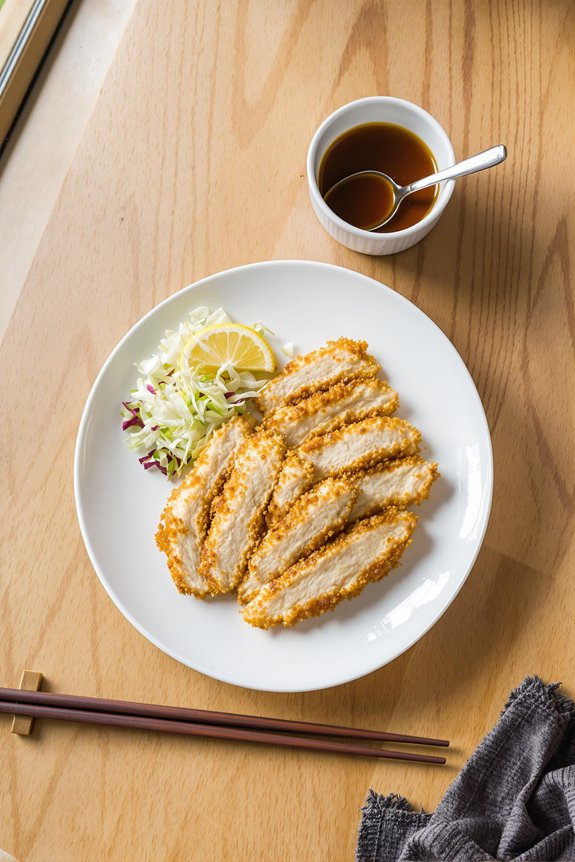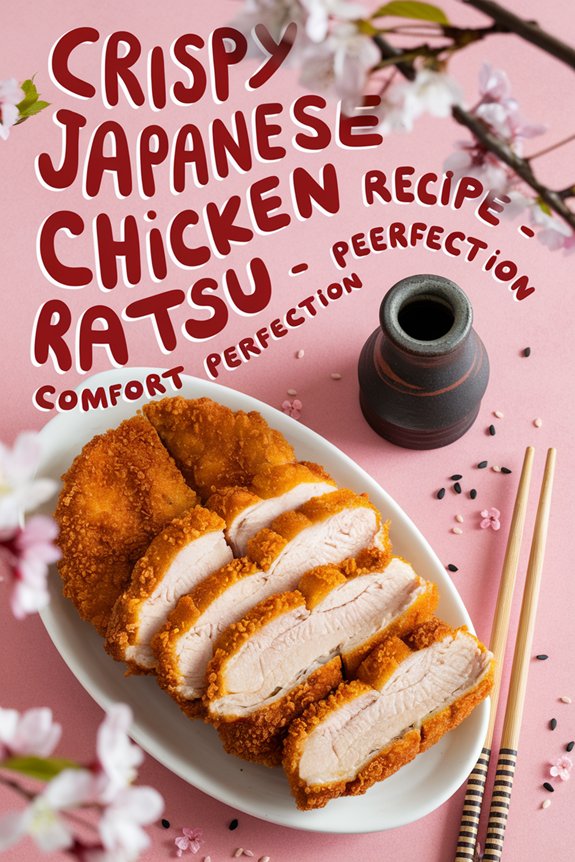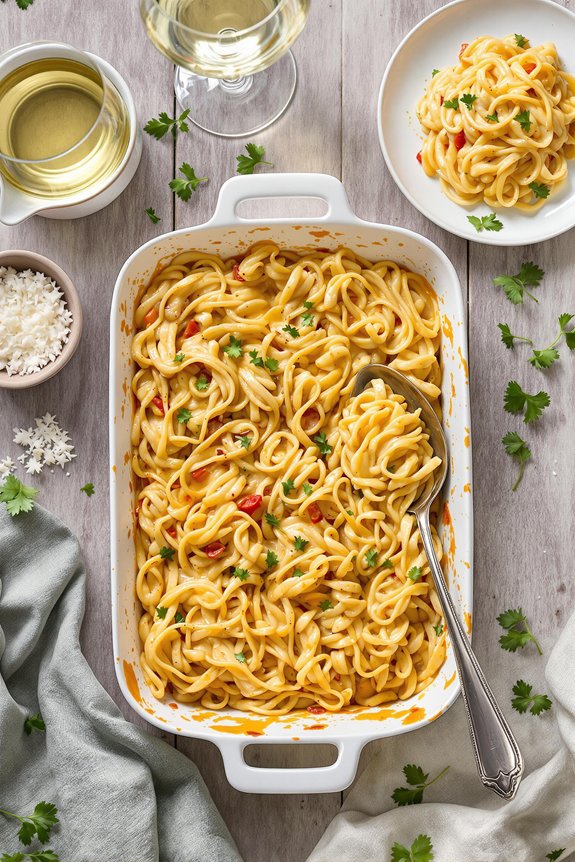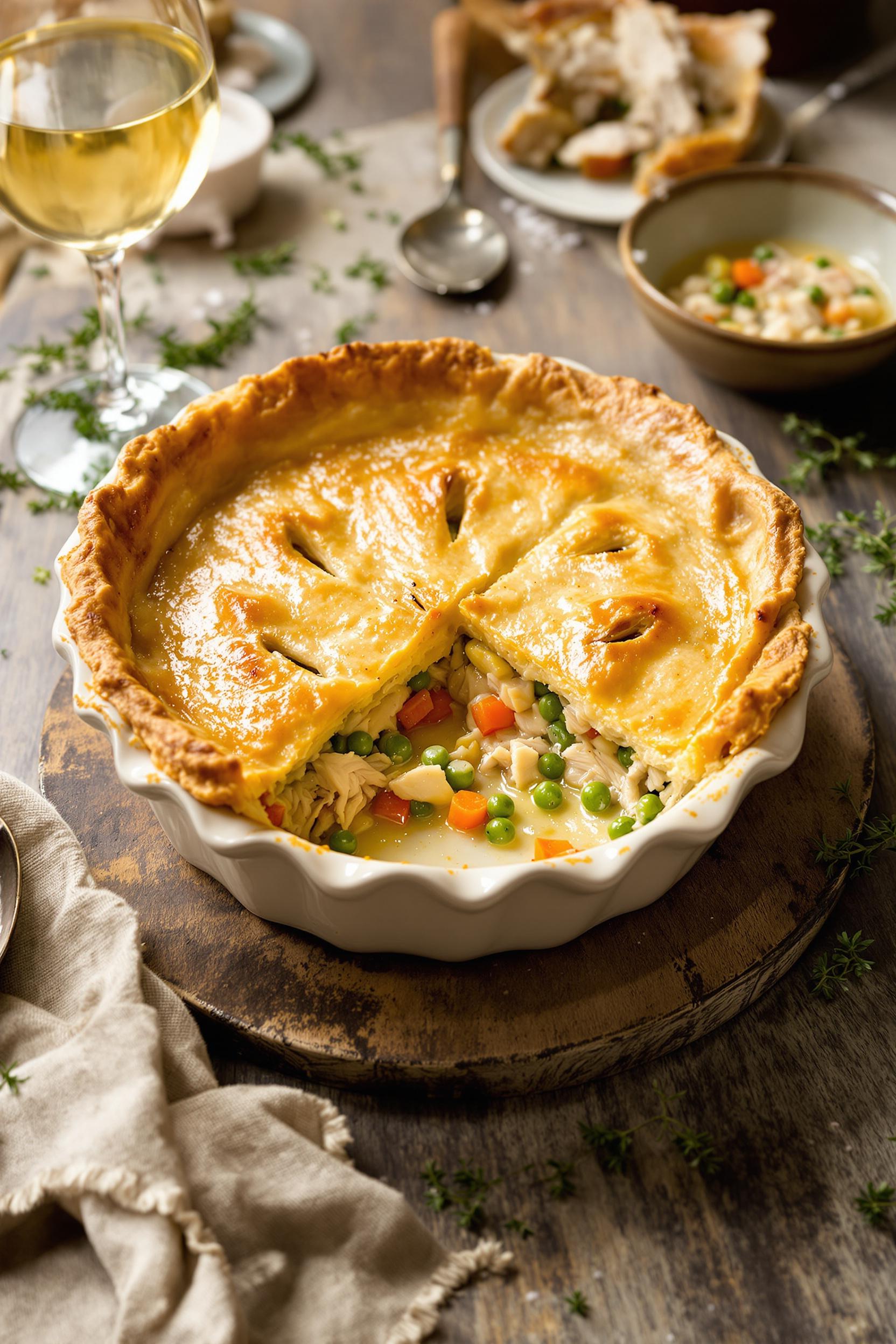Why You’ll Love this Crispy Japanese Chicken Katsu
Crunchy perfection that makes your mouth water just thinking about it.
There’s something magical about that golden panko coating, creating the most satisfying crunch when you bite through to juicy chicken thighs beneath.
I’m obsessed with how this dish balances textures—crispy exterior, tender interior, no soggy spots in sight.
The savory-sweet katsu sauce? Absolute game-changer.
Not too complicated to make, either. Even on busy weeknights, I can pull this together and feel like I’ve created something special.
Restaurant-quality comfort food, right in your kitchen. Worth every minute.
What Ingredients are in Crispy Japanese Chicken Katsu?
The magic of chicken katsu lies in its simple yet perfectly balanced ingredients. Traditional Japanese katsu relies on quality components rather than complicated flavor profiles, letting each element shine through. The star is always the juicy chicken, encased in that irresistibly crunchy coating that makes this dish so craveable.
When I make this at home, I’m always amazed by how basic ingredients transform into something that feels so special.
For the Chicken Katsu:
- 2 pounds boneless skinless chicken thighs
- 1/2 teaspoon salt
- 1/2 teaspoon white pepper
- 1/2 teaspoon garlic powder
- 1 egg
- 1/2 cup milk
- 1/2 pound panko breadcrumbs
- 1 quart canola oil (for frying)
For the Katsu Sauce:
- 1/4 cup ketchup
- 1/2 cup Worcestershire sauce
- 2 tablespoons soy sauce
- 2 dashes Tabasco sauce
- 1/4 teaspoon pepper
The quality of your panko makes a huge difference in the final crunch factor. Unlike regular breadcrumbs, Japanese panko has a lighter, airier texture that creates that signature crispy coating.
And while chicken thighs are recommended here (they stay juicier than breasts), you could substitute chicken breasts if you prefer white meat—just be careful not to overcook them.
The simple seasoning lets the contrast between the crunchy exterior and tender meat take center stage, while the tangy-sweet katsu sauce brings everything together with its rich depth of flavor.
How to Make this Crispy Japanese Chicken Katsu
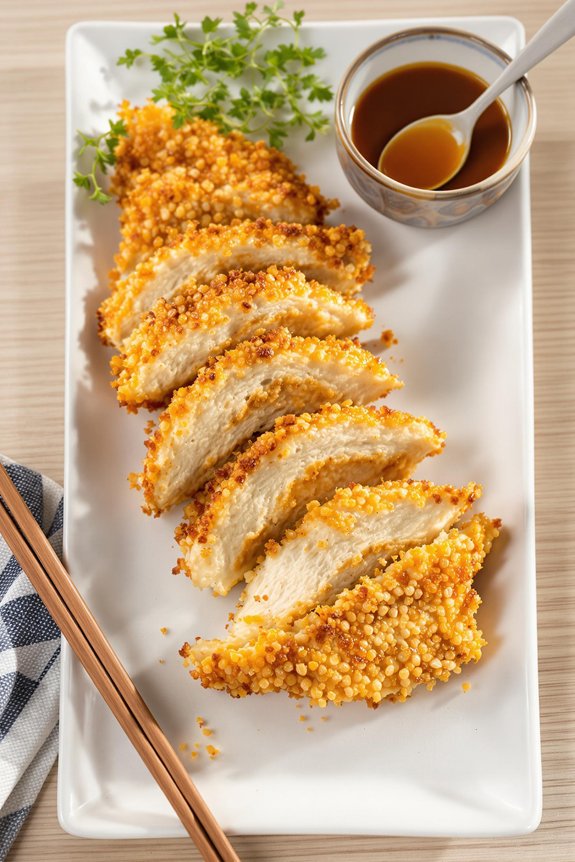
Creating perfect chicken katsu is all about technique and timing. Start by trimming the fat from 2 pounds of boneless skinless chicken thighs, then filet them to an even ½-inch thickness for consistent cooking. Season the meat with ½ teaspoon each of salt, white pepper, and garlic powder, distributing the seasonings evenly. This simple seasoning base builds a foundation of flavor without overwhelming the natural taste of the chicken.
Next comes the essential three-step breading process that creates that signature crunch. Whisk together 1 egg and ½ cup milk in a 9×13 pan to create your egg wash. In a separate pan, combine your flour and ½ pound of panko breadcrumbs.
Take each piece of chicken and dredge it first in flour (just a light dusting), then dip it in the egg wash, allowing excess to drip off. Finally, press it firmly into the panko, making sure to completely coat the chicken and pressing down gently so those beautiful breadcrumbs really adhere. This pressing motion is key—it’s what helps create that perfect crust that won’t fall off during frying.
For cooking, heat 1 quart of canola oil to exactly 325°F in a heavy-gauge pot—too hot and the outside burns before the inside cooks; too cool and the breading absorbs too much oil. For optimal preparation, you might consider using a Vitamix professional blender to create custom breadcrumb textures that enhance your katsu’s crispiness. Fry the chicken in small batches (overcrowding is the enemy of crispiness) for about 5 minutes until golden brown, testing the first piece to verify it’s cooked through.
Let the katsu rest and drain on paper towels before slicing into strips. While the chicken rests, whisk together ¼ cup ketchup, ½ cup Worcestershire sauce, 2 tablespoons soy sauce, a couple dashes of Tabasco, and ¼ teaspoon pepper to create that tangy-sweet katsu sauce that perfectly complements the crispy chicken. The contrast between the crunchy exterior and juicy interior is absolutely worth the effort.
Crispy Japanese Chicken Katsu Substitutions and Variations
While traditional chicken katsu calls for specific ingredients, you’ll be happy to know this recipe adapts beautifully to whatever you have on hand.
No panko? Regular breadcrumbs work in a pinch, though they won’t be quite as airy-crispy. Chicken breast can substitute for thighs, just watch it closely to prevent drying out. For a gluten-free version, crush rice cereal instead of panko and use tamari in your sauce.
Want a twist? Try pork cutlets for tonkatsu, or go vegetarian with firm tofu slices. The sauce is flexible too—honey instead of ketchup adds sweetness, and sriracha can replace Tabasco for extra kick.
What to Serve with Crispy Japanese Chicken Katsu
Three perfect sides will transform your chicken katsu from a simple dish into a complete Japanese feast.
First, steamed short-grain rice—fluffy, sticky, and ideal for soaking up that delicious katsu sauce. Trust me, it’s non-negotiable.
Next, add a crisp cabbage slaw dressed with rice vinegar and sesame oil. The acidity balances the richness of the fried chicken perfectly.
Finally, miso soup rounds everything out with its savory warmth. Just a simple bowl with tofu, seaweed, and green onions.
Who needs takeout when home-cooked katsu can be this complete?
Final Thoughts
Making this crispy Japanese chicken katsu at home has completely changed my weeknight dinner game.
There’s something deeply satisfying about that perfect crunch of golden panko giving way to juicy chicken underneath. I’m constantly amazed at how such simple ingredients transform into something so crave-worthy.
What I love most? The versatility. Slice it for sandwiches, serve it with curry, or enjoy it traditionally with that tangy katsu sauce.
Trust me, once you master this technique, you’ll find yourself reaching for this recipe again and again. Comfort food doesn’t get much better than this.

